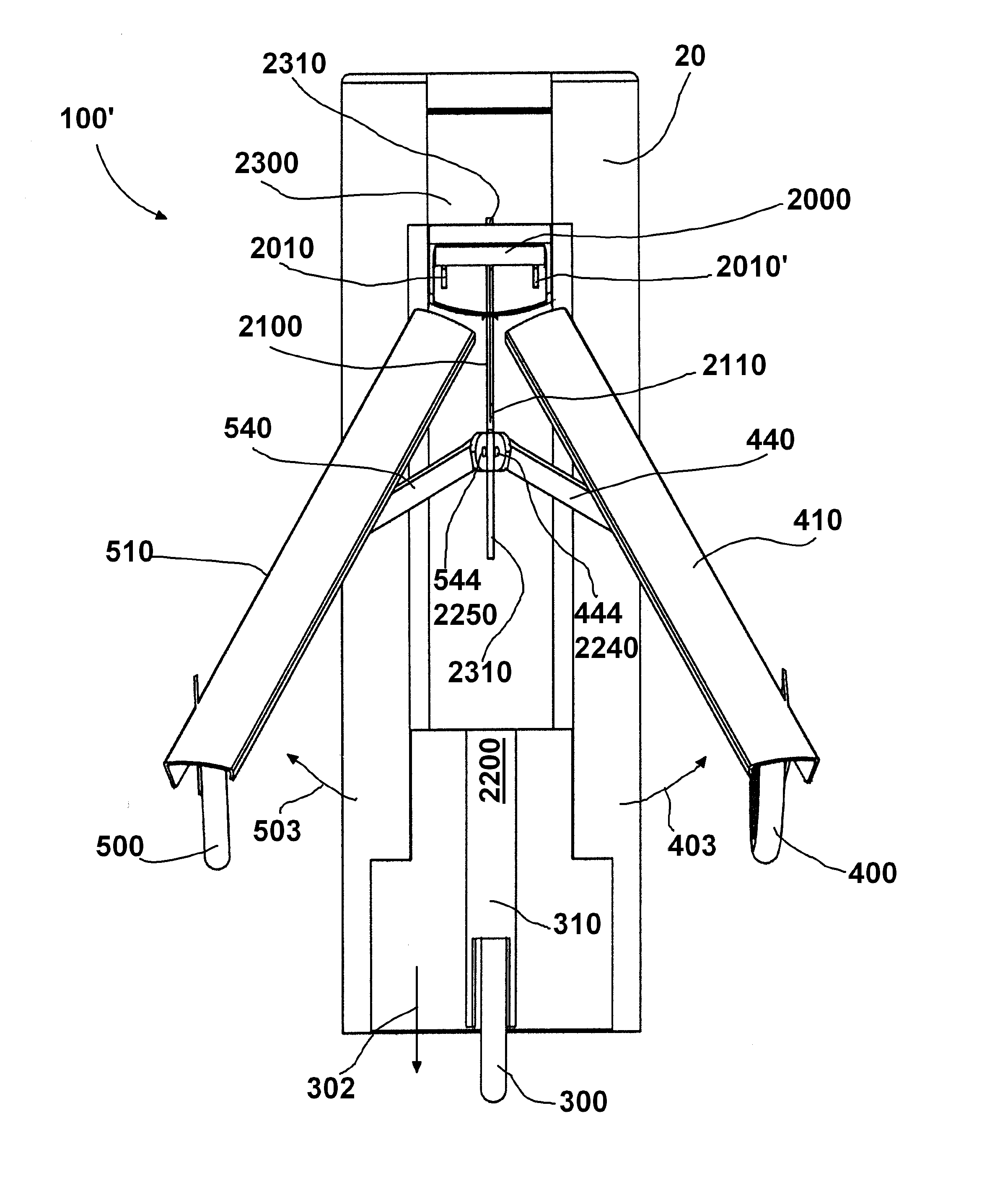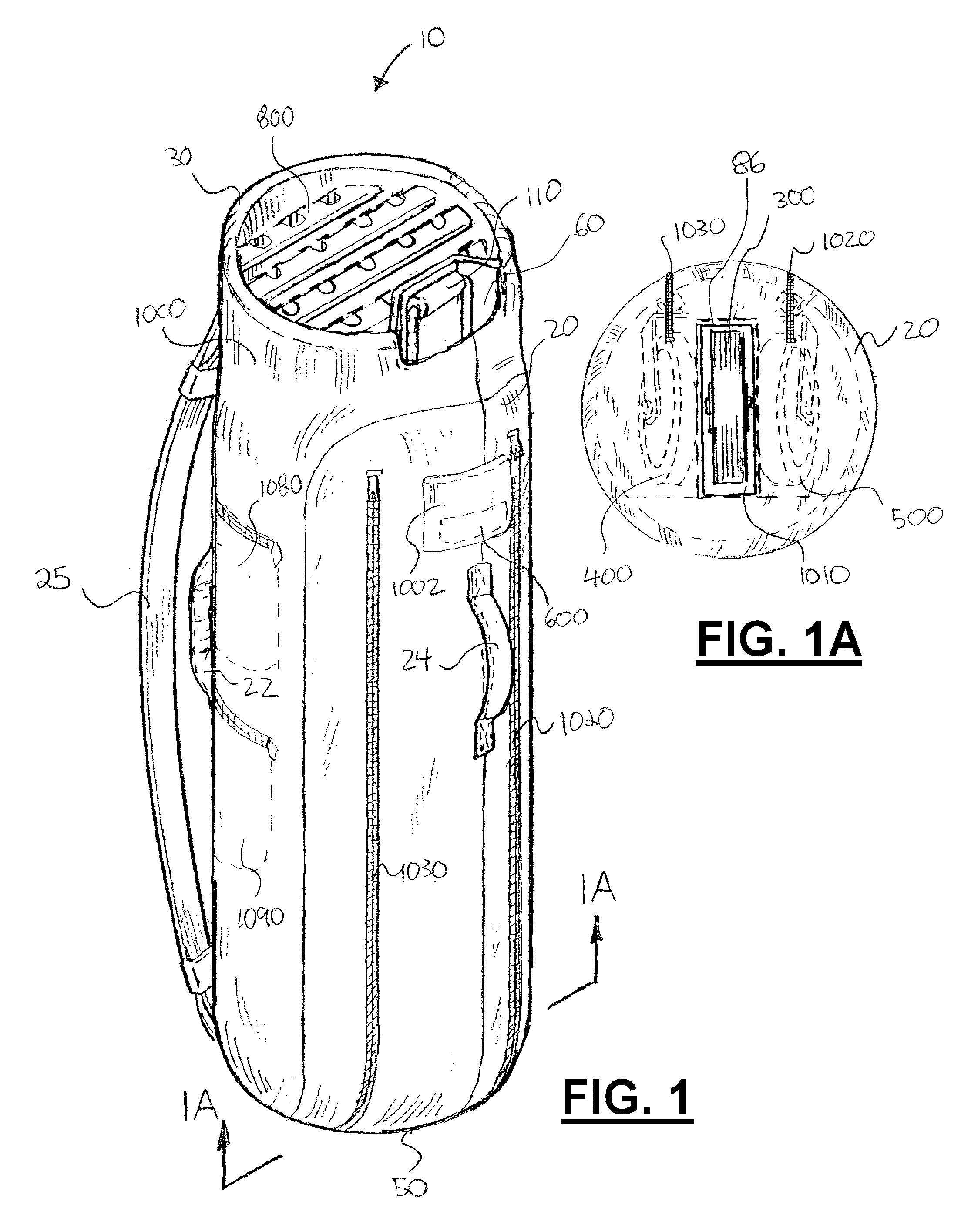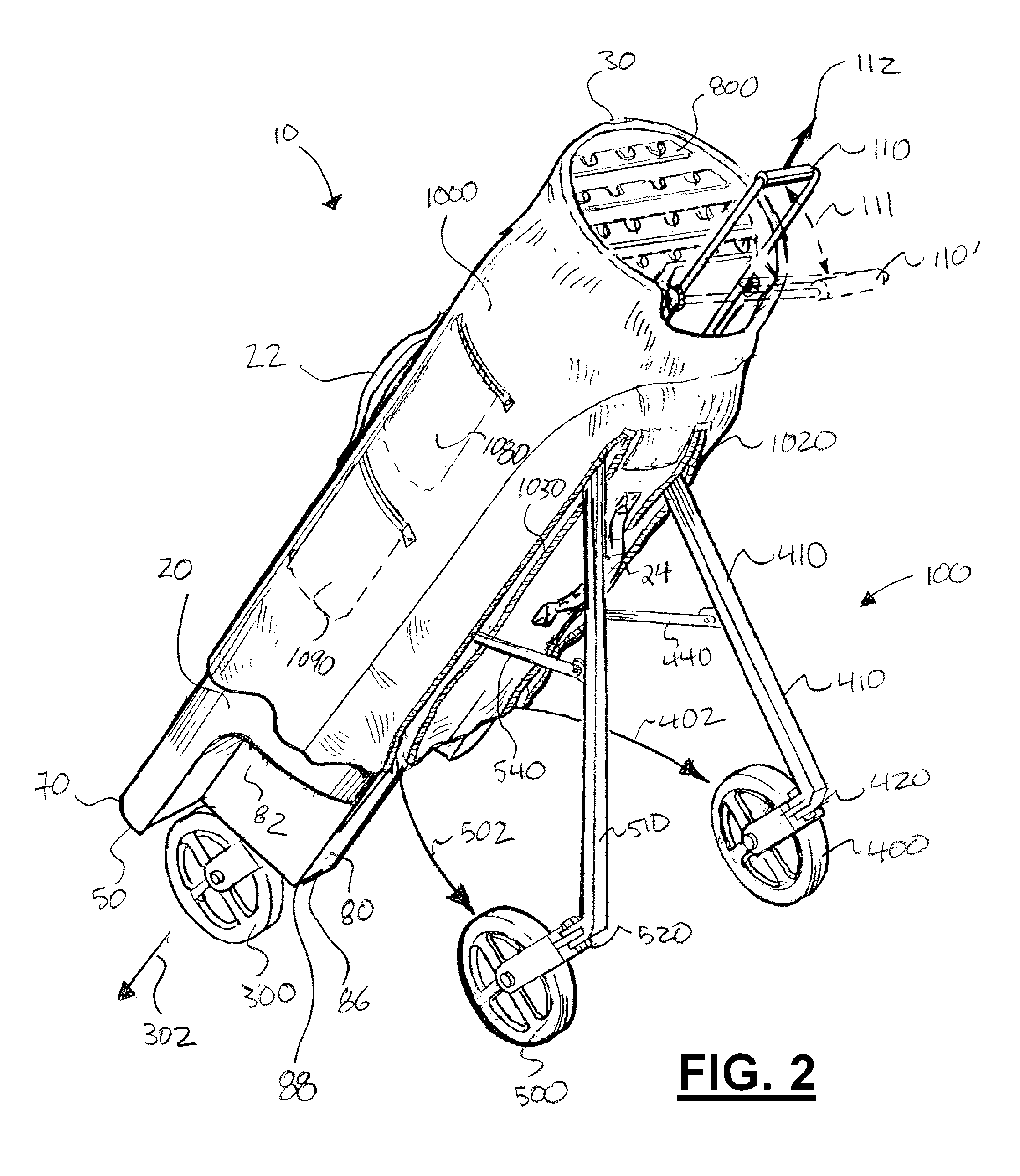Sports bag with integral transportation system
a transportation system and sports bag technology, applied in the field of sports bags with integrated transportation systems, can solve the problems of personal items adding substantial weight to golf bags, affecting the performance of golfers, and requiring considerable physical effort by golfers, and achieve the effect of convenient mounting of bags
- Summary
- Abstract
- Description
- Claims
- Application Information
AI Technical Summary
Benefits of technology
Problems solved by technology
Method used
Image
Examples
sliding embodiment
[0110]FIGS. 16-28 show an alternative embodiment of the sports bag with integral transportation system 100′. In these figures the cover 1000 has been omitted for clarity.
[0111]FIG. 16 is a schematic view of another embodiment of the deployment and retraction system 100′ which includes a sliding member 2200 in a sliding housing 2300. FIG. 17 is a side view of the deployment and retraction system 100′ shown in an extended state, where the sliding housing 2300 has been omitted for clarity. FIG. 18 is a side view of a sports bag with integral wheeled transportation system 100′ shown in an extended state. FIG. 19 is a rear view of the deployment and retraction system 100′ shown in an extended state where the sliding housing 2300 has been omitted for clarity. FIG. 20 is a rear view of a sports bag with integral wheeled transportation system 100′ shown in an extended state. FIG. 21 is a top view of the deployment and retraction system 100′ shown in an extended state, where the sliding hous...
PUM
 Login to View More
Login to View More Abstract
Description
Claims
Application Information
 Login to View More
Login to View More - R&D
- Intellectual Property
- Life Sciences
- Materials
- Tech Scout
- Unparalleled Data Quality
- Higher Quality Content
- 60% Fewer Hallucinations
Browse by: Latest US Patents, China's latest patents, Technical Efficacy Thesaurus, Application Domain, Technology Topic, Popular Technical Reports.
© 2025 PatSnap. All rights reserved.Legal|Privacy policy|Modern Slavery Act Transparency Statement|Sitemap|About US| Contact US: help@patsnap.com



